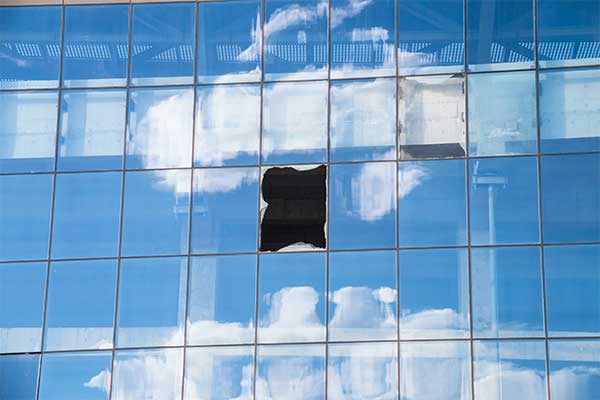
With their expansive glass windows, commercial buildings often pose a significant threat to our feathered friends. Birds, especially during migration seasons, can collide with these seemingly invisible barriers, resulting in injuries or fatalities. Fortunately, there are effective window solutions that can be utilized to prevent bird collisions on commercial buildings. Whether enacted on towering skyscrapers or street-level retail storefronts, these efforts demonstrate corporate responsibility by protecting avian life.
Table of Contents
Understanding the Problem
Birds do not perceive glass as a solid obstacle. Instead, they see reflections of the sky, trees, or surrounding buildings, which they interpret as open airspace. This illusion leads to countless bird-window collisions every year. To address this issue, businesses must take proactive steps to protect local bird populations.
Bird Safety Window Films
One of the most effective window solutions for businesses is bird safety window films. These films are designed with patterns that birds can detect, breaking up the reflection and making the window visible to them. A film like Bird Divert is a discreet and cost-effective way to prevent collisions. While invisible to the human eye, birds see ultraviolet dots that warn them of danger.

Exterior Screens and Netting
Exterior screens and netting are an alternative solution to film. These physical barriers prevent birds from flying directly into windows. While they may be more noticeable, they are highly effective at reducing collisions and can be customized to fit the building’s design.
Education and Awareness
Implementing bird-friendly window solutions is only part of the equation. Businesses can also contribute to bird protection by raising awareness among employees and visitors. Displaying educational signage near windows, explaining the purpose of bird divert window film or other solutions, can help reinforce the importance of bird conservation. Encourage employees to report any bird collisions they witness, as this data can be valuable for monitoring and improving bird safety measures.
Collaboration and Compliance
In some regions, there are regulations or guidelines in place to promote bird-friendly building practices. Businesses should collaborate with local bird conservation organizations and follow any relevant regulations to ensure they are doing their part to protect birds. By being compliant and actively participating in bird conservation efforts, businesses can build a positive reputation in their community and demonstrate their commitment to sustainability and environmental responsibility.
Conclusion
Preventing bird strikes in commercial settings is not just an ethical choice; it’s also a responsible business decision. By investing in bird-friendly window solutions, businesses can reduce the risk of bird collisions, contribute to bird conservation efforts, and demonstrate their commitment to corporate social responsibility. These efforts not only protect our feathered friends but also create a more sustainable and environmentally conscious image for businesses, which can be a point of pride and differentiation in today’s socially and environmentally aware marketplace.

Energy Products Distribution is a Master Distributor of 3M Window Films, 3M Paint Protection Films, 3M Wrap Film Series 2080, 3M Protection Wrap Films, 3M Architectural Finishes, 3M Ceramic Coatings, and Windshield Skin. We sell our products to professional installers throughout the US who provide turnkey installations (labor and material) to end-users in the automotive, commercial, government, and residential markets. Contact us to learn more about the benefits of these products.









